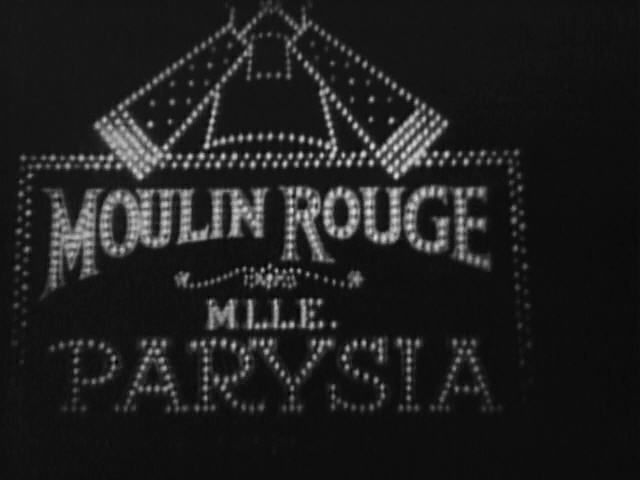“I
love my daughter and my work—my daughter because I am her mother—my work
because it keeps me young”
If I were to go back in time for a visit (not to stay. I would
never want to go and actually live in the past, I just want to go for a visit) I
would love to visit 1920s Paris. I have mentioned it a few times on here, but
in case you have not read this blog before here is why: I would want to hang
out with all the surrealist artists in this time. I really enjoy learning about
the surrealists especially Man Ray, I love his photography. I would love to
have been part of that art scene and hang around all the expatriates at that
time as well. I feel like Owen Wilson’s character from Midnight in Paris, but for me it is not a cliché. I have a degree
in Art History and one of my favorite time periods to study in terms of art and
general history is Paris in the 1920s.
Just imagining all the debauchery that was happening then
and all the great times people were having living it up in Paris. I think it is
a dream almost everyone has. One place in Paris that has captured the
imagination of all Francophiles for generations is the Moulin Rouge. Some may
think of the musical (which sucked, **ducking flying objects**). It is a
theater and burlesque/risqué dancing and shows happened. The theater was a
profession high society frowned upon. Unlike today where we worship people of
the stage and those in the entertainment industry, in the early 1900s the stage
was vulgar. The ladies of the theater were sinful and lustful and lured men
with money to their doom with their siren call. The Moulin Rouge was one of
those theaters filled with sinful, lustful women. Well, according to the 1928
film version it was.
In the silent film, men and women from all levels and classes
of society gather at the Moulin Rouge to watch the reviews. A marquis waits
backstage for the main attraction, Paysia, in her dressing room. Paysia
receives a letter from her daughter Margaret that she has returned to Paris and
wants to her.

Margaret’s fiancé, Andre, come with her to meet Paysia. They
meet her at the theater while she is on stage. Andre comments that Paysia is
the most beautiful woman he has ever seen, besides Margaret of course. The
moment Andre lays eyes on Paysia in person his face takes on a lustful appearance.
Andre has not told his family that he plans to marry
Margaret. His father is an old fashioned aristocrat. The father had forbid
Andre from seeing Margaret because her mother is a dancer. Paysia feels
terrible because she can see how much her daughter loves Andre. The next
morning at breakfast it is not Margaret Andre pays attention to. He looks
lustfully at Paysia the entire time basically ignoring Margaret.
Paysia goes to speak to Andre’s father. She can see
Margaret loves Andre so she wants to try to talk some sense into the father for
her daughter’s sake. She tells the father that greater calamities could befall
his son than marrying the daughter of an actress. Before she leaves, Paysia
cries and purposely leaves her handkerchief behind. The next day Paysia receives
a letter from the father that he will allow their marriage, or so she tells her
daughter and fiancé. Margaret goes out of the room. Paysia asks Andre when he
plans on marrying her daughter. He falls to his knees and says it depends on
her, he wants to marry Paysia. She like Andre as well but does not want to lead
him on.
Things happen. Andre is a jerk and is a jerk to the point
where he had planned to drive out to his father’s house and kill himself by
loosening the breaks. He was going to kill himself because he loves Paysia and
Margaret but he cannot choose. He becomes sick with nerves so Margaret decides
to take his car out to the father’s house. The phone rings. Paysia picks it up.
Andre tells her the call might be someone telling her that Margaret is dead and
he confesses what he did to the breaks. He races with Paysia’s car to catch up
to Margaret. He reaches her but they still wind up crashing. Paysia gets a call
that her daughter has been badly hurt and has to have surgery. She goes to her
show that night but can barely do the show. She has a break down in her
dressing room between numbers.
Have no fear dear reader! Margaret (barely) pulls through
surgery. Paysia tells Andre that he has been redeemed.
Moulin Rouge
was a bore. I knew right from the beginning that Andre was going to lust after
the mother and by some tragic occurrence would return to Margaret. Well, I have
to say that I thought Paysia would sacrifice herself but thankfully she did
not. I did like the direction especially the scenes panning through the crowds
at the theater. I do believe that it captured that care-free spirit of the
1920s as well as that struggle between the new and the tradition that was
pushing and pulling some unfortunates at the time. The scenes in the Moulin
Rouge are how my dreams of Paris in the 1920s are like. It is not a totally
realistic view it is a dream Paris. Moulin
Rouge is not a silent film I highly recommend seeing. If you do want to
watch it at some point it is available to view in full on YouTube.

No comments:
Post a Comment